WIYLS visits a beef shed built for low effort and high welfare
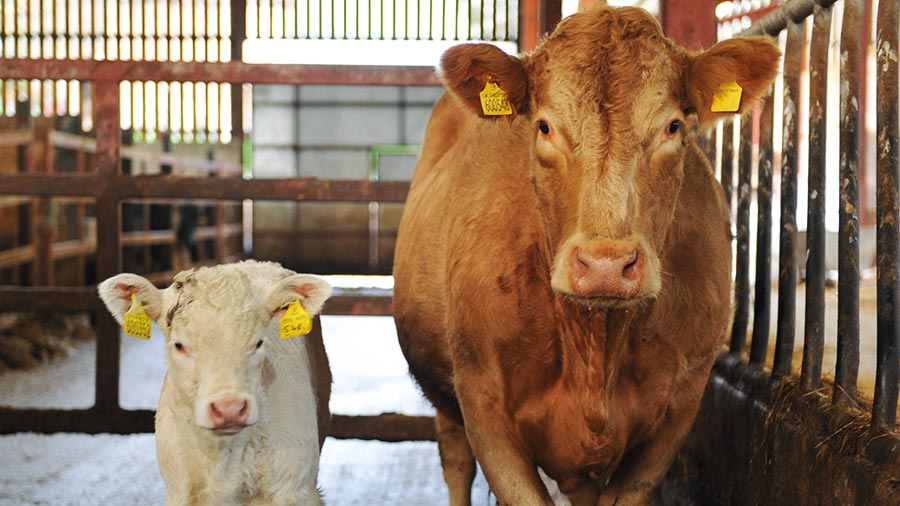 One of Griff Morris' commercial cows with calf © Debbie James
One of Griff Morris' commercial cows with calf © Debbie James Buildings on the Morris family’s farm at Lower Drostre, near Brecon, were outdated and poorly positioned.
In their place the family has put up a 150-bed shed that allows bedding, mucking out and feeding routines to be completed by one person in less than 90 minutes.
“A tired, stressed stockman bogged down with an inefficient system cannot operate as they should,” says Griff Morris, who farms with his son, Gareth, wife, Carolyn, and daughter-in-law, Steph.
See also: 10 ways one farm makes suckler beef profitable
Farm facts
- 405ha (1,000 acres) farmed in Powys and at Llanstephan, Carmarthenshire
- Bulls and heifers from the pedigree herd sold at Carlisle, Welshpool and Brecon Society sales
- Bull calves from the commercial herd sold at six to nine months for finishing
- Heifers retained as embryo recipients and sold as second calvers with calves at foot
- Flock of Brecknock Hill Cheviot, Texel and Bluefaced Leicester ewes
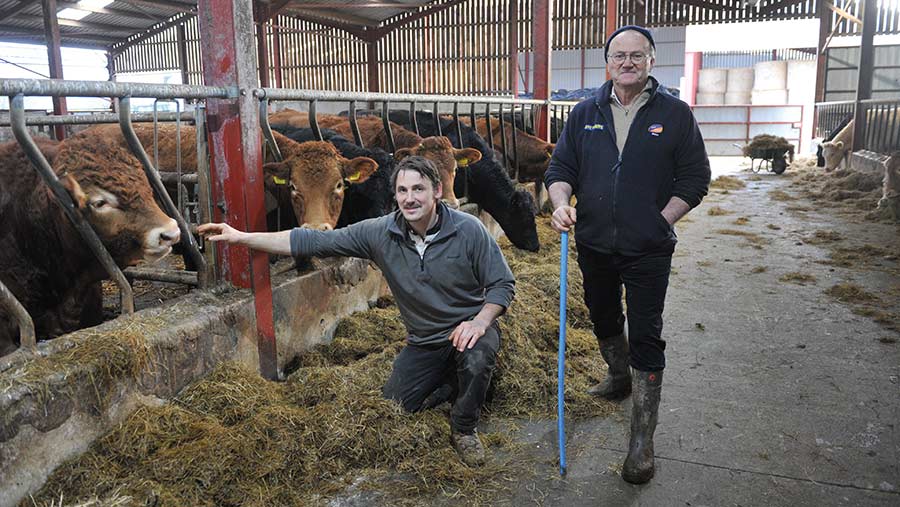
Griff and Gareth Morris © Debbie James
Why was the new housing needed?
We bought the farm in 2015 and while the land was good, the steading was a mishmash of old, outdated and ill-positioned buildings.
Some were taken down, recycled and repositioned, and more sections were added to create what we have today.
How did you design the building?
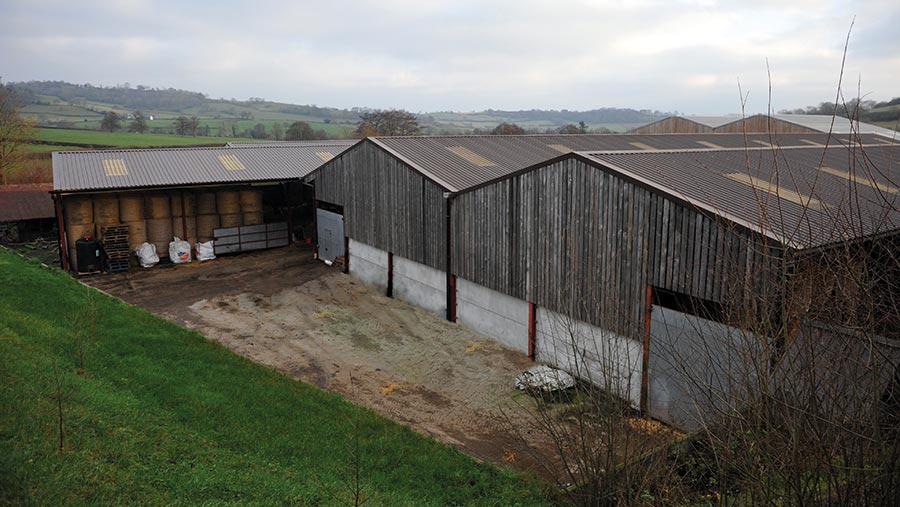
© Debbie James
If you want the best from the farm without harming the environment, stock must be housed for well over half the year.
With that in mind we wanted a system for the cattle that was neither elaborate nor expensive.
The design had to be such that the shed could be managed by one man in the minimum amount of time.
The routine work in our view must be as time and motion efficient as possible to give enough time for stock handling, assessment and evaluation.
It must also allow for necessary maintenance and minimise the number of never-ending days we all have to endure from time to time.
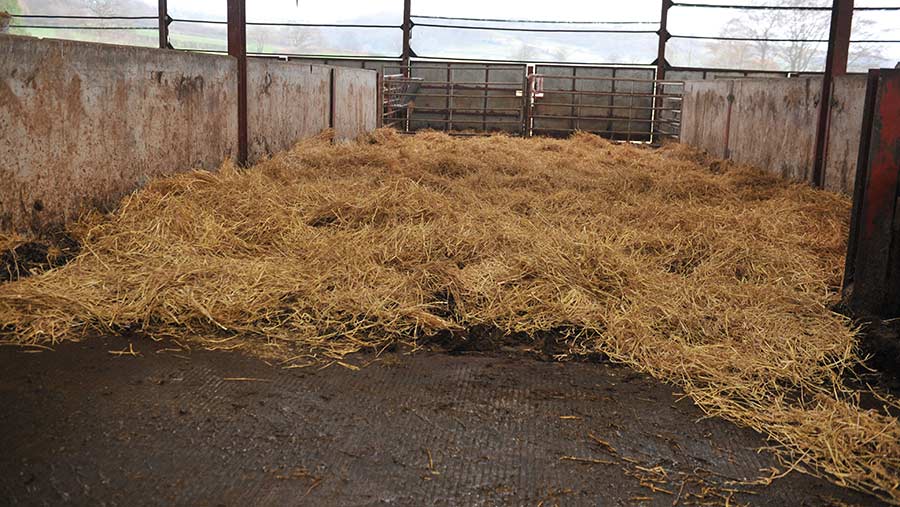
© Debbie James
How is the shed laid out?
The building is designed around a central feed passage with calving pens to the rear.
There are nine housing pens which can be shut back from the 5.4m (18ft) scrape passage in front.
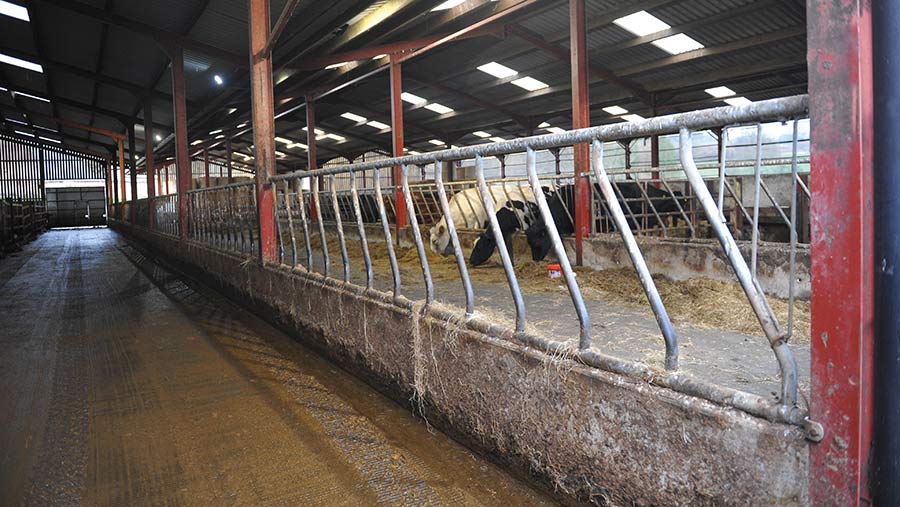
© Debbie James
Feeding off that bedded area are up to 24 6x3m (20x10ft) calving pens which also double up as creep areas when calving has finished.
These pens can also be shut back to create a scrape passage. When scraped, the cattle remain shut back to allow straw bedding to be blown into the pens.
The same system allows any group or individual animal arriving to be moved to the handling race and returned in a circuit without fuss.
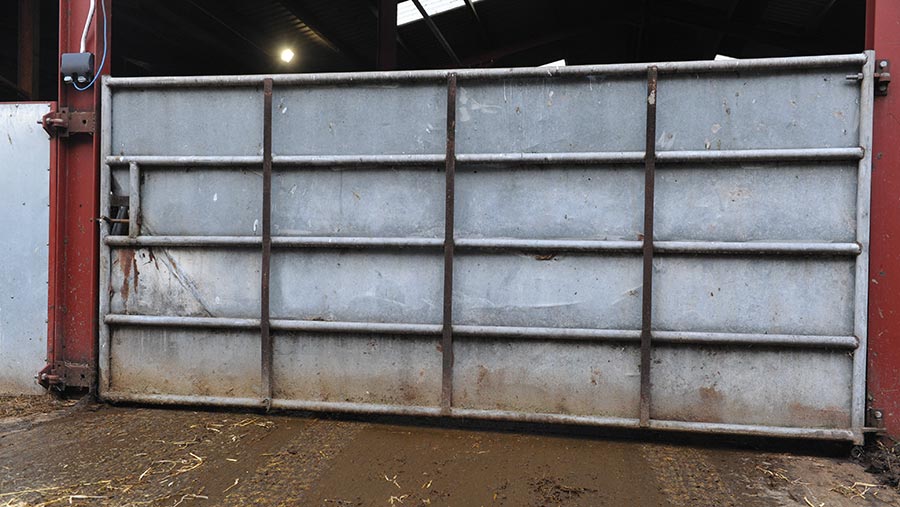
© Debbie James
Tell us about the shed’s specifications
The shed is made up of two buildings – 49x23m (160x75ft) and 49x26m (160x85ft) – joined together with two cantilevers, one measuring 3m (10ft) and the other 1.5m (5ft).
It is a steel structure with eight bays and Yorkshire boarding at the gable end.
The roof is box profile and the underside is sprayed with a treatment to prevent condensation.
What is your favourite feature?
The efficiency of the building.
The factors that can affect an animal’s performance are diverse – stress, competition, disease and nutritional imbalance – and the factors that can affect a stockperson’s performance are just as varied – stress, overwork, injury and long hours.
It is the stockperson’s job to manage all these factors, and this shed allows us to do that.

© Debbie James
What couldn’t you live without?
The calving gate. It makes the process of calving a cow much smoother. Every farm should have one.
Our vet offers clients a 25% discount for assisted calvings if a farm has one of these gates.
A calving gate is safe and operator-friendly; an injured stockperson is no use to anyone.
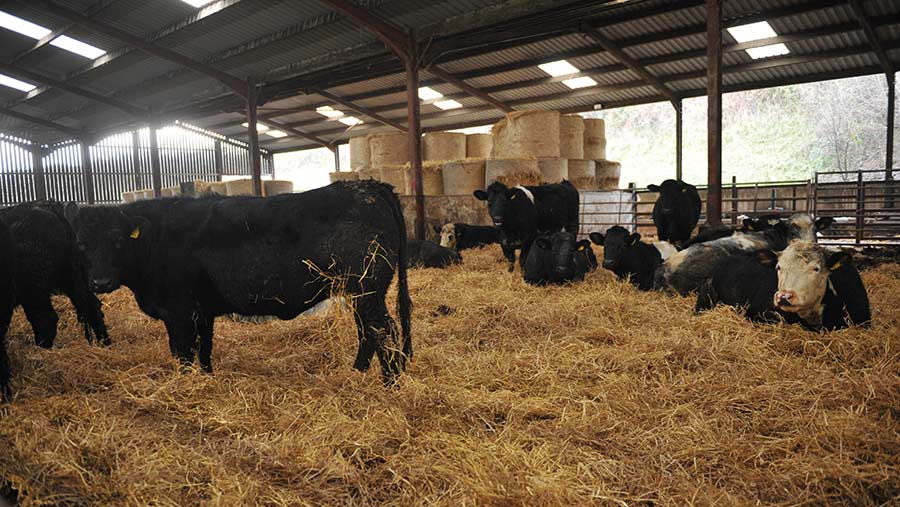
© Debbie James
Any other ‘must haves’ in the shed’s design?
The diagonal feed barriers. It was important to us that every beast had an eating space. We didn’t want cows queuing up to eat.
The diagonal design stops bullying.
We didn’t want self-locking yokes because the clanging would have driven us mad.
The quick-emptying water troughs mean the cattle always have fresh water – they can be quickly and easily cleaned because they drain from the bottom.
It was important to badger-proof the building, too; all the doors are designed to prevent wildlife getting in.
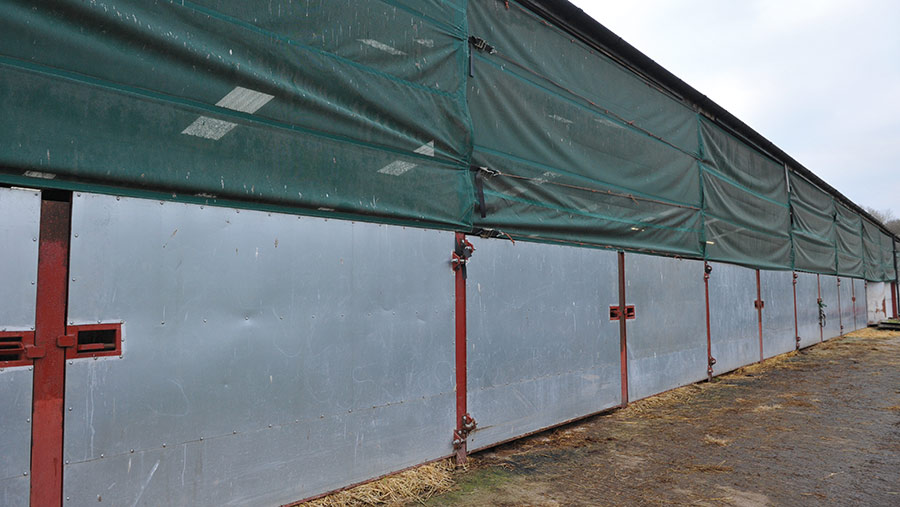
© Debbie James
What features of the system improve cattle health and performance?
Ensuring good ventilation was a priority when we designed the shed.
It is open-sided but we have since installed galebreakers on one side after snow drifted in during the “Beast from the East”.
We try to get calves to suck within an hour of birth to cut down on the legacies of poor antibody levels, with the back-up of tubing calves from heifers with cows’ colostrum.
We aim to use vaccines to prevent disease rather than antibiotics, as once the digestive systems and lungs of calves have been impaired they remain unthrifty.
This loss of performance is particularly devastating in a pedigree calf because its evaluation at sale depends on development and weight for age.
As a result of vaccination we very rarely lose a beast.
We credit our vaccination policy and herd health status and selection with excellent fertility – our commercial herd achieved a 96% conception rate in 2021.
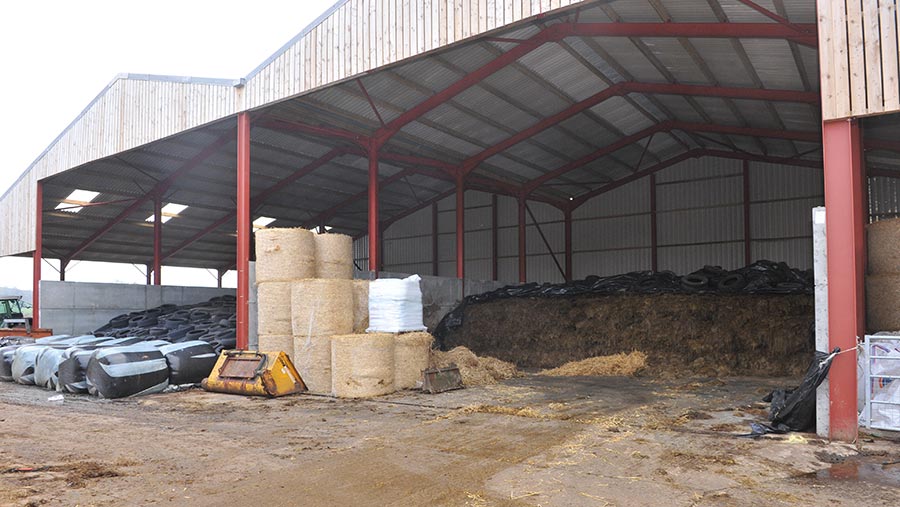
© Debbie James
Have you made any additions since the shed was built?
With a view to future-proofing our business, in 2021 we put up a shed with two covered silage pits and a dry muck store with drains to a large effluent tank.
It was built to a high specification, so the investment was £120,000, but it was supported by a 40% sustainable production grant.
This, combined with both manure and soil-testing facilities, keeps risks to the environment and costs down.
We apply just what nutrients the grassland needs and no more, to ensure no excess leaching to watercourses – or, indeed, out of our bank account.
In Wales we are by and large a nation of family farms. Our communities are precious and vulnerable, and these farms must be sustainable and viable.
Monies paid out in farm grants and support are not spirited away to personal accounts, they are recycled into the economy, the environment and for survival.
Cattle breeding
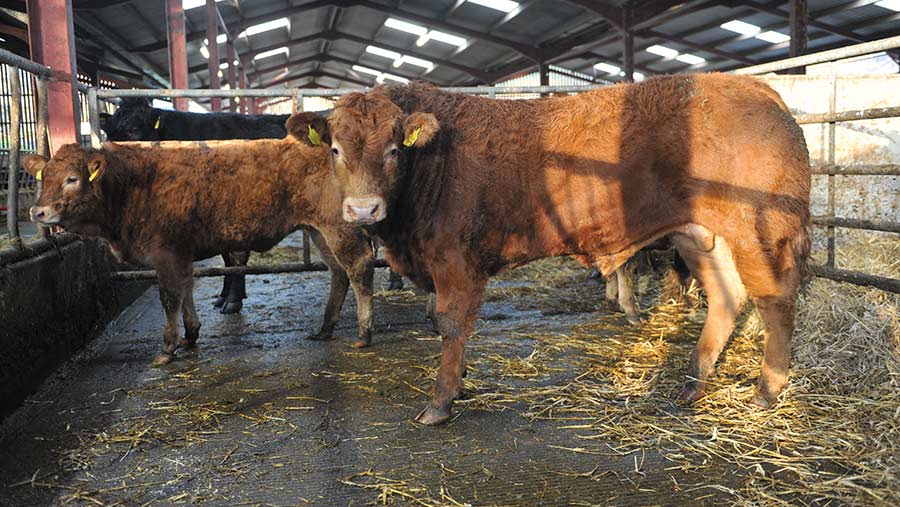
© Debbie James
The Morris family have bred pedigree cattle for 35 years.
Charolais was the principal breed – animals from the Cargriff herd were champions at many of the top shows including Perth, Carlisle, and the Royal Welsh.
When Gareth joined the business, he introduced Limousins and this is now the main breed.
“Whereas the parameters for what defines market relevance may change, a good cattle beast is still a good cattle beast, and we have what we consider to be an outstanding crop of calves,’’ says Griff.
The pedigree Dylans herd developed from an embryo flushing programme, which now revolves around five donor cows. Among the most successful donors are Dylans Fanta and Dylans Magical, which have produced many show-winning progeny.
Of the 11 embryos implanted in the 2021 breeding programme, 11 pregnancies resulted.
“We hope for a 60-70% success rate, and anything over that is a bonus, so this was a tremendous result,’’ says Griff.
